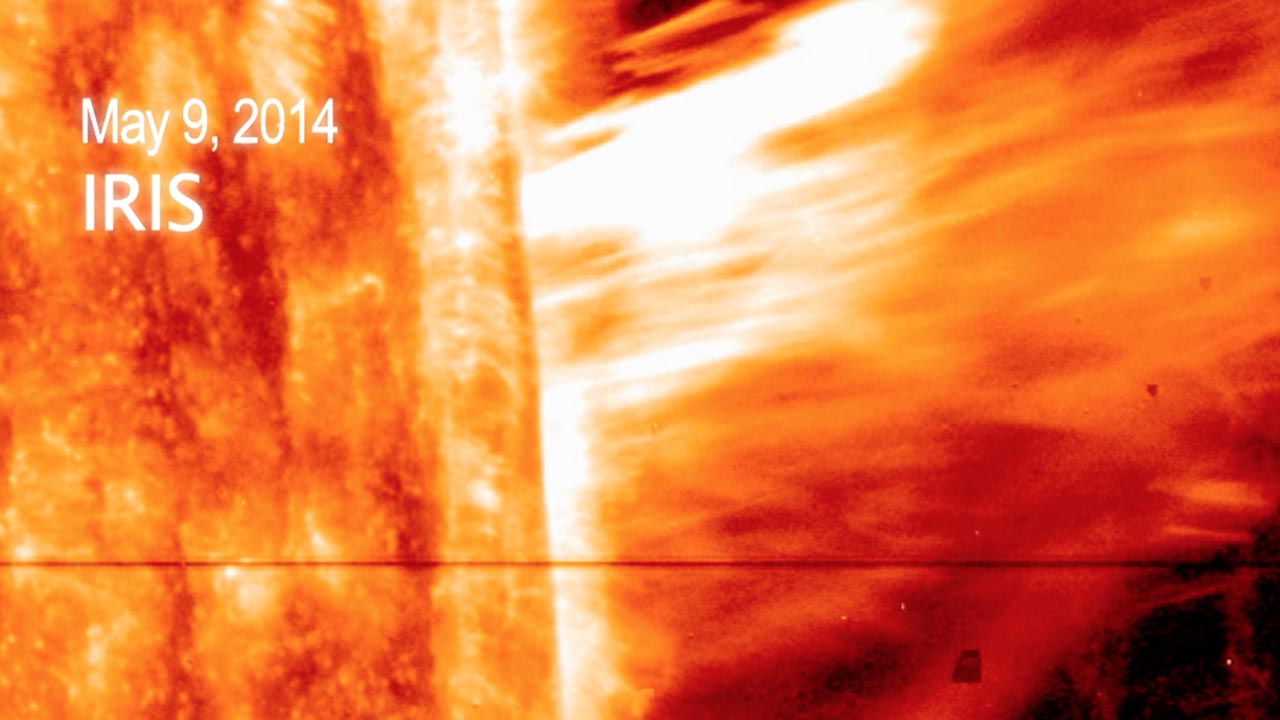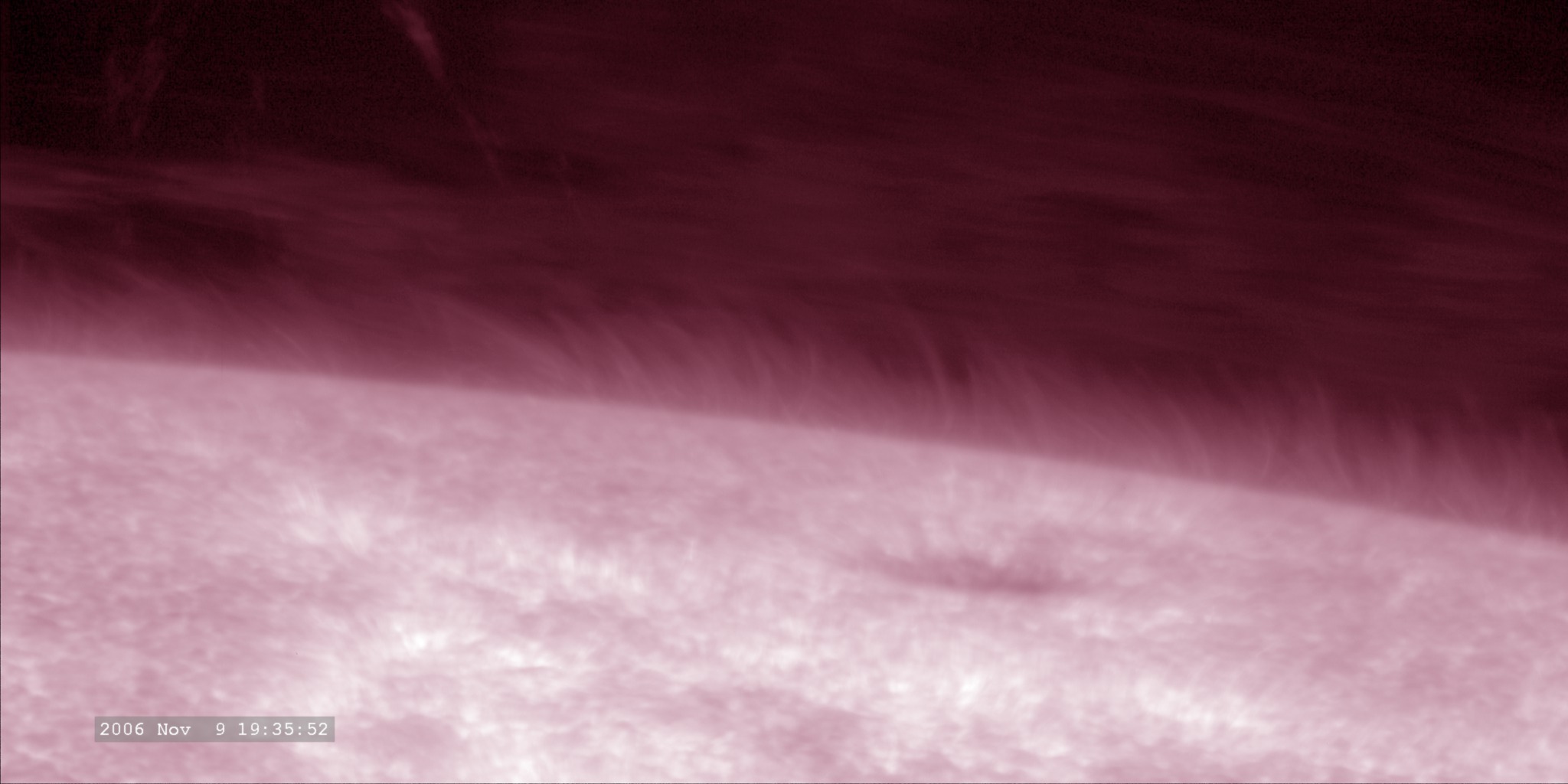Scientists Uncover Origins of Dynamic Jets on Sun's Surface
At any given moment, as many as 10 million wild jets of solar material burst from the sun’s surface. They erupt as fast as 60 miles per second, and can reach lengths of 6,000 miles before collapsing. These are spicules, and despite their grass-like abundance, scientists didn’t understand how they form. Now, for the first time, a computer simulation — so detailed it took a full year to run — shows how spicules form, helping scientists understand how spicules can break free of the sun’s surface and surge upward so quickly.
This work relied upon high-cadence observations from NASA’s Interface Region Imaging Spectrograph, or IRIS, and the Swedish 1-meter Solar Telescope in La Palma. Together, the spacecraft and telescope peer into the lower layers of the sun’s atmosphere, known as the interface region, where spicules form. The results of this NASA-funded study were published in Science on June 22, 2017 — a special time of the year for the IRIS mission, which celebrates its fourth anniversary in space on June 26.
Research: On the generation of solar spicules and Alfvénic waves.
Journal: Science, June 22, 2017.
Link to paper: http://science.sciencemag.org/content/356/6344/1269.full
Watch this video on the NASA Goddard YouTube channel.
Complete transcript available.
Music credit: 'Solar Dust' by Laurent Levesque [SACEM], 'Games Show Sphere 05' by Anselm Kreuzer [GEMA] from Killer Tracks
A computer model simulation of spicules. Spicule-like features appear as dense, cool intrusions in the hot corona, originating from the boundaries of the strong magnetic regions. (A/top half of video) Temperature and (B/bottom half of video) density maps are shown on a logarithmic color map with white magnetic field lines (A) and black contours where plasma β = 1 (B). t, time.
Credit: Bifrost, ITA-UiO/LMSAL
Observations of spicules from NASA/JAXA's Hinode spacecraft.
Observations of spicules from NASA's Interface Region Imaging Spectrograph, or IRIS. A GIF optimized for Twitter is available in the Download tab.
Observations of spicules from NASA's Solar Dynamics Observatory, or SDO. Over a few hours observation of the northern pole area of the Sun in extreme ultraviolet light (Aug. 3, 2010), we can see a continual frenzy of spicules.
For More Information
Credits
Please give credit for this item to:
NASA's Goddard Space Flight Center
-
Scientists
- Juan Martínez-Sykora (Lockheed Martin/BAER Institute)
- Bart De Pontieu (Lockheed Martin Solar and Astrophysics Lab)
- Adrian Daw (NASA/GSFC)
-
Producer
- Joy Ng (USRA)
-
Writer
- Kathalina Tran (KBR Wyle Services, LLC)
Missions
This page is related to the following missions:Series
This page can be found in the following series:Related papers
Release date
This page was originally published on Thursday, June 22, 2017.
This page was last updated on Wednesday, May 3, 2023 at 1:47 PM EDT.

